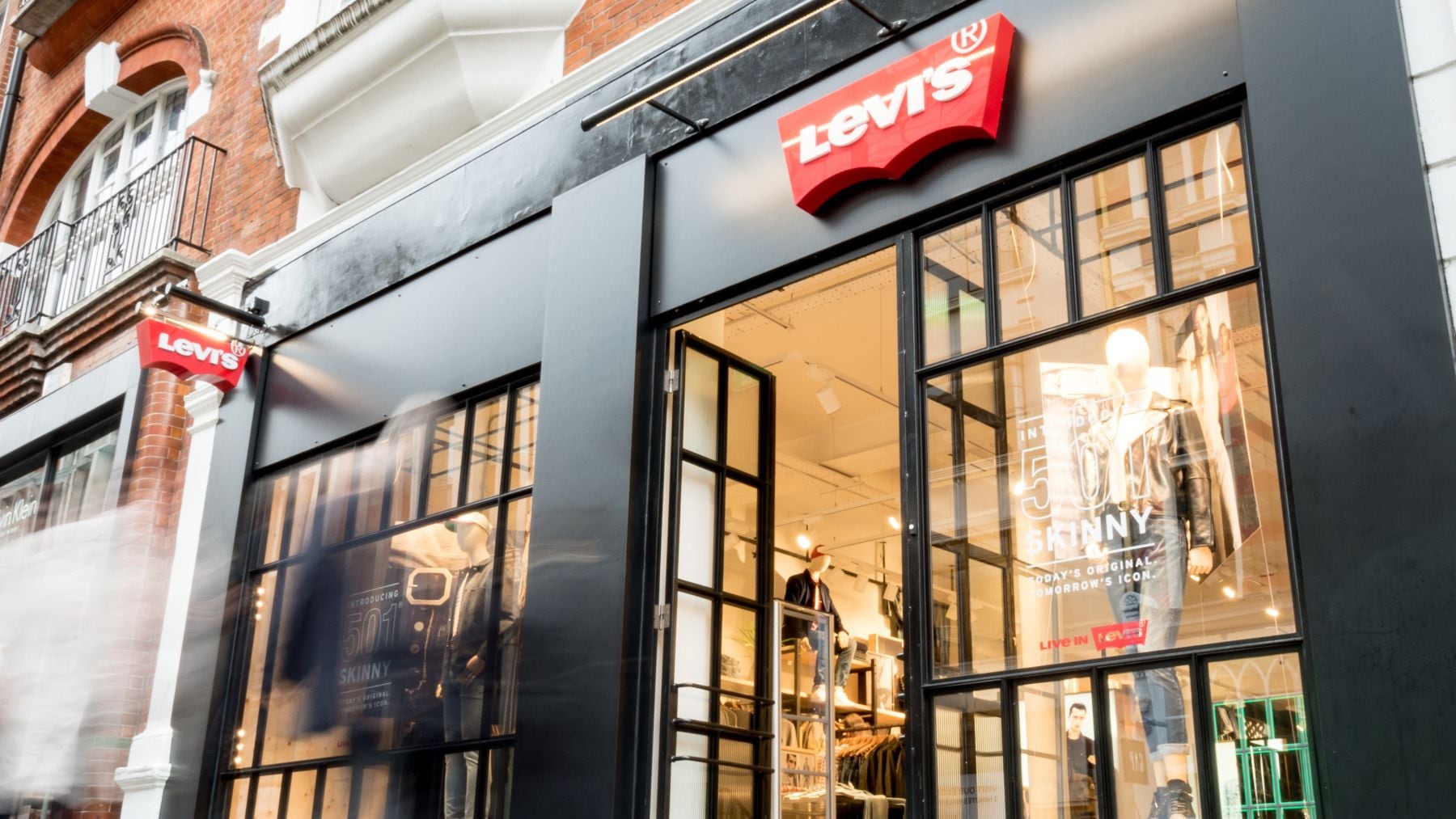
At first glance, it looks like Levi’s isn’t selling enough jeans. The brand’s overall sales dropped 8 percent to $1.6 billion in the first quarter of the year.
But that drop was an expected impact of Levi’s decision to pull more inventory from its retail partners during that period, a major step in its years-long strategy to generate 55 percent of its sales through its own channels by 2027. On that goal, Levi’s is succeeding: The company’s direct sales grew 8 percent, accounting for 48 percent of the overall business.
Levi’s isn’t the only large brand prioritising its DTC business. Sneaker seller On’s DTC sales grew nearly 40 percent year over year in the first quarter of 2024, against a 21 percent jump in its overall revenue. Ralph Lauren said in February that its stores and e-commerce site account for two-thirds of its overall sales. DTC sales growth at Calvin Klein’s and Tommy Hilfiger’s parent company, PVH, is also outpacing its entire business. In the past year, e-commerce software firm Shopify, which typically powers online storefronts and services like payments and marketing for digitally native businesses, has signed on several major fashion brands that have historically been wholesale heavy, including Isabel Marant, Oscar de la Renta, DKNY and Paris-based menswear brand Ami.
This focus on DTC comes amid continued challenges in multi-brand retail. The luxury e-commerce sector has been plagued by woes, from Farfetch’s fire sale to South Korean retail giant Coupang last December to Matches being put into administration in March. Department stores, which have long faced decline as consumer preferences shift, are seeing their challenges ramp up, too. Macy’s plans to close 150 stores in the next three years as activist investors swarm with buyout proposals, while Nordstrom is reportedly considering going private. Brands are responding to this uncertainty. Ralph Lauren announced in May that it exited 20 department stores in North America for its fiscal year that ended in March, as its revenue in that channel decreased 10 percent year over year during that period.
As struggling multi-brand retailers resort to rampant discounting to drive sales, luxury brands are opening more of their own stores and improving the shopping experience on their sites. Since the start of the decade, Kering has moved e-commerce operations for brands like Gucci and Balenciaga in-house to further build those direct businesses, and in February it pulled its brands off of Farfetch.
“We’re in a time in the economy where profitable growth matters. One of the best ways to increase margins is to cut intermediaries and go direct,” said Harley Finkelstein, president of Shopify.
Despite the ramp up in interest in DTC, there are real downsides. Online, acquiring customers is expensive, and there’s endless competition. Because of those difficulties, brands that once launched with the premise of selling DTC only, such as beauty label Glossier, shoe seller Allbirds and intimates brand Parade, have entered wholesale en masse in recent years.
Still, for brands that can make DTC work, there’s potential for payoff: Selling directly offers labels more control over pricing and the ability to more easily collect data to improve product development and inventory management. Established brands that are increasing their focus on DTC should use the channel to push products beyond their hero items; invest in brand marketing that drives consumers to their online and offline stores; and ultimately avoid overreliance on one channel.
“For brands who can get it right in a market where profitability is paramount, [DTC is] a channel that can make a lot of sense to invest in,” said Taryn Jones Laében, president and founder of advisory and investment firm IRL Ventures.
Worth the Investment
Established brands may have more name recognition than their digitally native counterparts, but they are not exempt from the challenge of ballooning customer-acquisition costs. But strong brand marketing that grabs customers’ attention can lead to profitable growth in a brand’s online and offline stores.
Calvin Klein, for example, has had a string of viral campaigns in the past year that have helped parent company PVH boost DTC sales. A splashy ad starring “The Bear” actor Jeremy Allen White in January led to a 30 percent year-over-year increase in underwear sales in the US the week the campaign was released, and a March 2023 campaign starring Blackpink’s Jennie Kim resulted in the underwear and jeans featured in the ad selling out globally in three days.
In 2023, Calvin Klein’s e-commerce revenue in North America jumped more than 10 percent in each quarter as engaged consumers return to the website to shop. In 2023, PVH’s DTC sales grew 9 percent, against 2 percent year-over-year revenue growth for the overall business, and its net income tripled in 2023 to $663 million.
“If you can create an efficient DTC marketing funnel where your customer acquisition cost is rationalised and boosted by understanding that customer and driving that customer to second or third purchase, that’s your most valuable customer,” Laében said.
But even wholesale-majority brands can struggle in DTC. Since 2017, Nike has been on a journey to become a DTC-majority business and reduced its presence in retailers like Foot Locker, Macy’s and DSW in the process. Customers that were accustomed to buying Nike at retailers didn’t always follow the brand to its direct channels. In the past year, it revitalised wholesale partnerships after seeing only modest increases in its profit margins.
“While Nike Direct will continue to play a critical role, we must lead in with our wholesale partners to elevate our brand and grow the total marketplace,” Nike chief executive John Donahoe said on an earnings call in March.
Balancing Channels
Strong marketing may get consumers’ attention, but to keep them shopping, brands looking to increase DTC have to differentiate their product offerings from their wholesale partners, selling styles beyond their hero items.
Levi’s has made an effort to highlight its assortment beyond jeans, such as skirts and dresses and pants in non-denim fabrics. That focus has helped strengthen sales in its online and physical stores: Sales of non-denim items rose 13 percent in the first quarter over 2023, with skirt and dress sales tripling in that period.
Brands also have to offer products that speak to what customers want at the moment if they want to increase sales in their direct channels. Levi’s saw sales gains in its looser-fitting and lower-rise jeans, which are on trend with younger customers.
“New product is what’s driving DTC and what we expect will drive also on the wholesale side,” Levi’s chief executive Michelle Gass said on an earnings call in April. “There’s so much opportunity. We should have the iconic denim skirt for everyone who wants it.”
Even if brands find success in DTC, they can’t eschew wholesale entirely. Consumers today bounce between multi-brand retailers and brands’ e-commerce and retail stores; brands should meet them wherever they are.
There are ways, however, to link those experiences. Nike’s retail partnerships today are constructed to connect its wholesale and DTC businesses. When the company partnered with Zalando last October, for example, it let shoppers link their Nike accounts to the multi-brand e-tailer to access a wider range of exclusive goods.
“We’re still in the days where brands are realising that wholesale is incredibly important and omnichannel is incredibly important, as opposed to simply making a bet on going direct,” said Simeon Siegel, managing director and senior analyst of retail and e-commerce at BMO Capital Markets. “They’re paring back on the maniacal focus on direct. Instead they’re trying to figure out how to do it right.”



